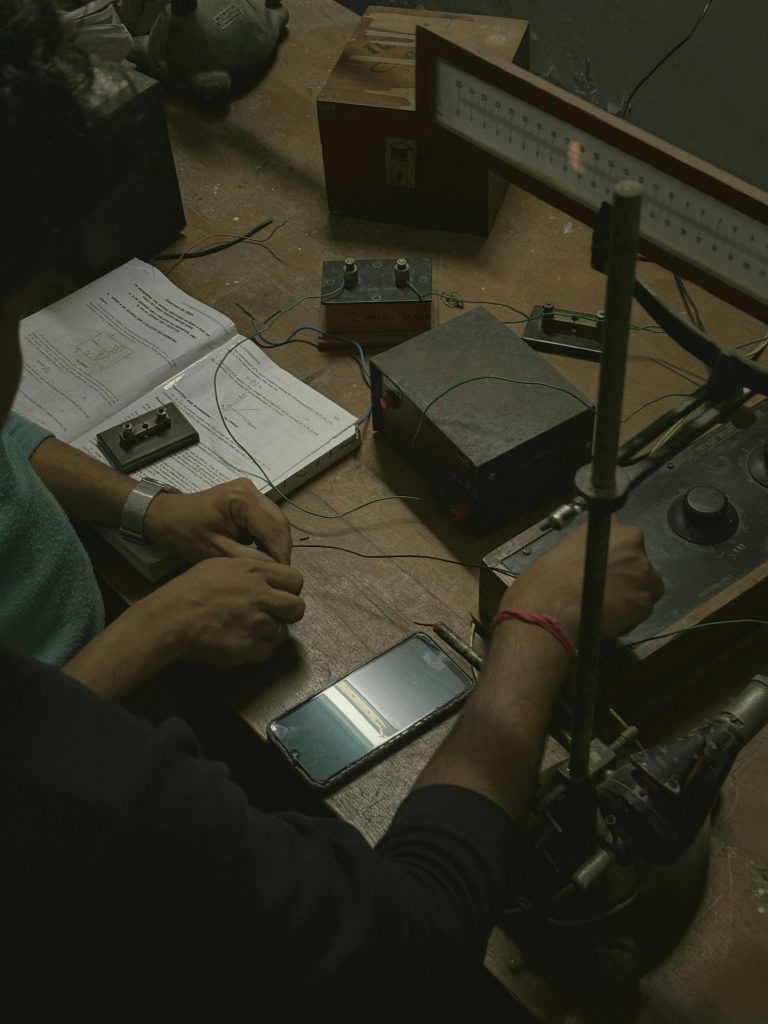When you’re wiring up a lighting circuit in your campervan, one of the most crucial decisions you’ll make is selecting the right size of wire. The correct wire gauge ensures not only optimal functionality but also the safety and longevity of your camper’s electrical system. Choosing incorrectly can lead to issues such as voltage drops, overheating, and, in the worst cases, fires. In this article, I’ll walk you through the essential considerations, the math behind wire sizing, and practical recommendations to ensure your campervan lighting circuit is as efficient and safe as possible.
Why Is Choosing the Right Size Wire Important for Your Lighting Circuit?
Before we dive into the specifics of wire sizing, let’s first understand why it’s so important to choose the right wire gauge. In a campervan lighting system, the wire is responsible for carrying current from the power source (usually the van’s battery or a separate deep cycle battery) to your lights. The wire’s job is to deliver the required voltage with minimal resistance.
Also read this What Technology Makes Your Car Beep When You Lock It?
If the wire gauge is too small for the current it needs to carry, the wire will heat up, leading to potential insulation damage, power loss, or even fire hazards. On the other hand, if the wire gauge is too large, it can be unnecessarily expensive and harder to handle, while offering no real additional benefit.
Selecting the right wire size ensures:
- Safe operation of the lighting circuit.
- Optimal energy efficiency by minimizing power loss.
- Long-term reliability, reducing the chance of costly repairs.
Now, let’s explore how to determine the right wire gauge for your campervan lighting circuit.
Understanding Wire Gauge and Its Importance in Campervan Lighting Circuits
Wire gauge refers to the thickness of the wire, and it is a key factor in determining how much electrical current the wire can safely carry. The most commonly used wire gauges for campervan lighting circuits are 12 AWG, 14 AWG, and 16 AWG, depending on the type of lighting, distance, and power requirements.
Here’s how to interpret the size:
- AWG (American Wire Gauge): The larger the gauge number, the thinner the wire. For instance, 16 AWG is thinner than 14 AWG.
- Current Carrying Capacity: Each gauge has a specific current limit it can safely carry without overheating. This is crucial when choosing a wire for your lighting circuit.
Factors to Consider When Choosing the Right Wire Size
Several factors influence the wire size you need for your campervan lighting circuit. These include:

- Amperage of the Lights: The total current draw of your lights is the most important factor when selecting wire size.
- Distance from Power Source: The further the lights are from the power source, the thicker the wire needs to be to prevent voltage drops.
- Voltage: The typical voltage for campervan lighting systems is 12V DC, but this can vary depending on your setup.
- Wire Insulation and Type: Different wire types (e.g., Tinned Copper, Marine-Grade) are designed to withstand environmental conditions such as moisture, heat, and UV radiation.
How to Calculate the Correct Wire Size for Your Campervan Lighting Circuit
To calculate the correct wire size for your campervan lighting, you’ll need to consider the power (in watts) of your lights, the voltage, and the length of the wire run. Here’s a step-by-step process:
Step 1: Determine the Total Wattage of Your Lights
Let’s say you plan to install a 12V LED light strip with a power draw of 5 watts per meter, and you want to install 5 meters of lighting. The total wattage is:
- 5 watts x 5 meters = 25 watts.
Step 2: Convert Watts to Amps
You can calculate the amperage (current) by dividing the total wattage by the voltage (12V). The formula is:
- Amps = Watts ÷ Volts. In this case:
- Amps = 25 watts ÷ 12V = 2.08 amps.
Step 3: Account for Wire Length
The wire length is crucial because the longer the wire run, the more resistance there will be, which can cause voltage drops. To avoid this, you’ll need a thicker wire for longer distances.
For distances up to 10 feet, a 16 AWG wire is usually sufficient for currents under 5 amps. For distances longer than 10 feet, you may want to use 14 AWG or 12 AWG wire to account for voltage drop.

Step 4: Choose the Right Wire Gauge
For the example above (2.08 amps over 5 meters), 16 AWG wire would be sufficient. However, if you were running the same lights 20 feet from the power source, you’d need a 14 AWG or 12 AWG wire to minimize voltage loss.
Common Wire Sizes and Their Applications for Campervan Lighting
Let’s break down the most common wire sizes used in campervan lighting circuits and their applications:
| Wire Size (AWG) | Max Current (Amps) | Typical Uses in Campervans | Recommended Length |
| 16 AWG | 10 amps | LED lights, small appliances | Up to 10 feet |
| 14 AWG | 15 amps | Multiple lights, small fans | 10 to 20 feet |
| 12 AWG | 20 amps | High-power lighting, fans | 20+ feet |
Pros and Cons of Each Wire Size
- 16 AWG:
- Pros: Lightweight, easy to work with, cost-effective.
- Cons: Limited to shorter runs and lower current.
- 14 AWG:
- Pros: More flexible, capable of handling higher currents, moderately priced.
- Cons: Slightly more cumbersome than 16 AWG, not suitable for very long runs.
- 12 AWG:
- Pros: Handles more current and longer distances, highly durable.
- Cons: Bulkier, higher cost.
Tech Specs and Recommendations for Campervan Lighting Circuits
When choosing the wire for your campervan lighting system, don’t just rely on basic wire gauge calculations. Consider the following recommendations for optimal performance:
Choose Marine-Grade or Tinned Copper Wire
For added protection, especially in damp environments like campervans, opt for marine-grade or tinned copper wire. These wires resist corrosion better, extending the lifespan of your wiring system.
Use Fuse Protection
To protect your lighting circuit, use fuses rated for the appropriate amperage based on the wire size and lighting load. This will protect your wiring from potential overcurrent situations.
Comparison Table: Wire Gauge vs. Current Draw
| Feature | 18 AWG Wire | 16 AWG Wire | 14 AWG Wire | 12 AWG Wire |
| Current Carrying Capacity | 10 Amps | 13 Amps | 15 Amps | 20 Amps |
| Wire Length (max) | 15 feet | 20 feet | 25 feet | 30 feet |
| Voltage Drop (max) | 3% | 3% | 3% | 3% |
| Common Use | Short runs, small loads | Medium runs, medium loads | Long runs, high-power systems | Heavy-duty circuits |





